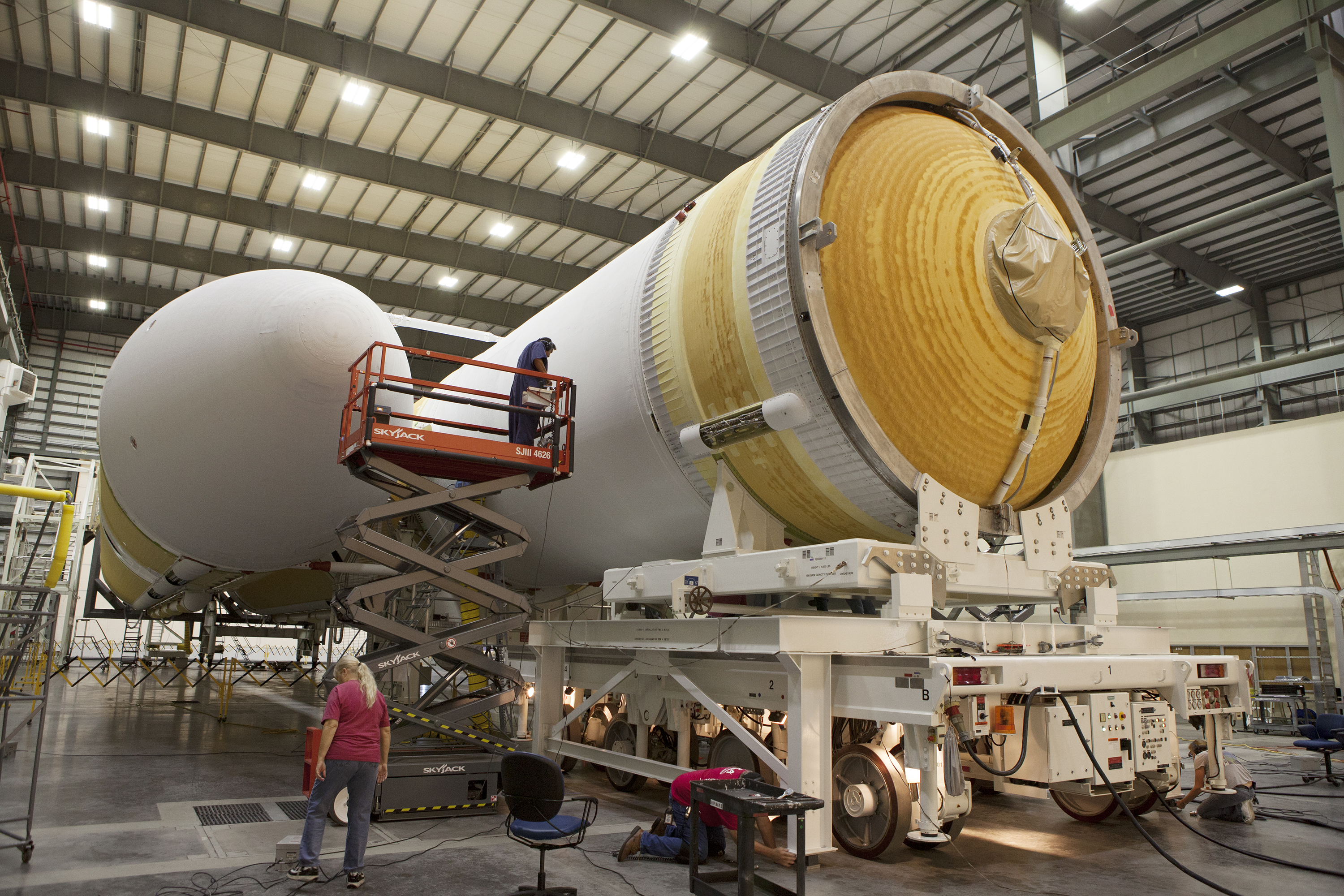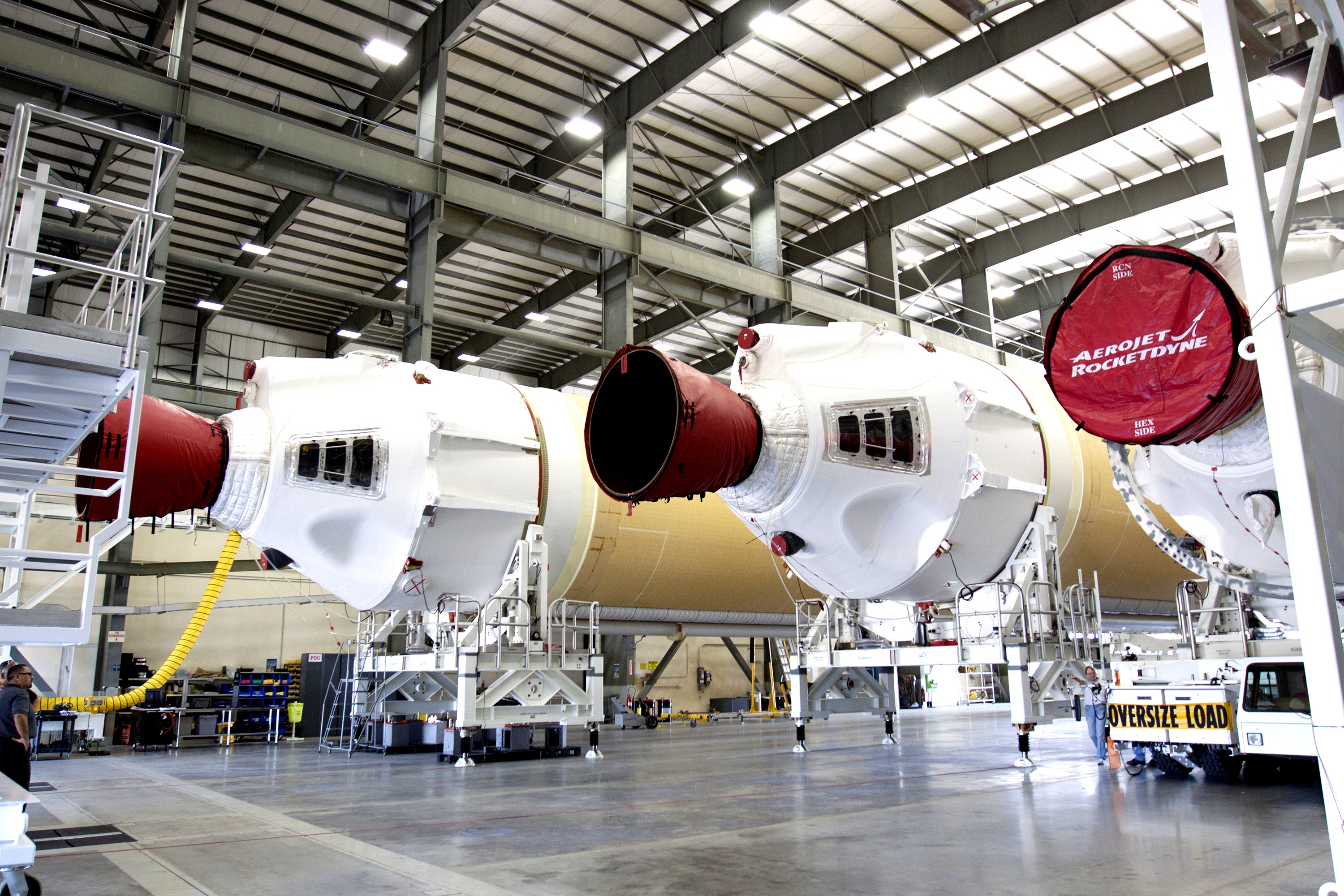Rocket Coming Together for New NASA Spaceship's 1st Flight

NASA's next crewed spaceship is one step closer to taking flight for the first time.
Engineers have integrated the two stages of the United Launch Alliance (ULA) Delta 4 Heavy rocket that will launch NASA's Orion capsule on a highly anticipated unmanned mission known as Exploration Flight Test-1 (EFT-1) in December.
"The hardware for Exploration Flight Test-1 is coming together well," Merri Anne Stowe, of NASA's Fleet Systems Integration Branch of the Launch Services Program, said in a statement today (Sept. 26). "We haven't had to deal with any serious problems. All of the advance planning appears to be paying off." [Orion: NASA's Next Crewed Spaceship (Photos)]
The rocket-assembly work took place at ULA's Horizontal Integration Facility (HIF) at Cape Canaveral Air Force Station in Florida and was led by ULA. First, engineers attached three elements known as Common Booster Cores to build the rocket's first stage. Each core is 134 feet long by 17 feet wide (42 by 5.2 meters), and together they generate 1.96 million pounds of thrust.
This work was done by early August, NASA officials said. The second stage — which is 45 feet long by 17 feet wide (13.7 by 5.2 m) and generates 25,000 pounds of thrust — was then mated to the first stage's central core in mid-September.
Technicians will soon check out the rocket stages to make sure all is well, then conduct a "test readiness review."
"These meetings are held to bring together all the interested parties to be sure the Delta 4 rocket is ready for the move to the launch pad where the Orion spacecraft will be mated," Stowe said.
Breaking space news, the latest updates on rocket launches, skywatching events and more!
Orion is a crew capsule designed to carry NASA astronauts to deep-space destinations such as asteroids and Mars. During manned missions, Orion will launch atop the agency's Space Launch System (SLS) mega-rocket.
But SLS won't be ready to fly until late 2017, so a Delta 4 Heavy will be used for EFT-1, which is set to blast off Dec. 4 from Cape Canveral.
This unmanned test flight will send Orion 3,600 miles (5,800 km) from Earth. Four hours later, the capsule will re-enter the planet's atmosphere at 20,000 mph (32,190 km/h), generating and enduring temperatures as high as 4,000 degrees Fahrenheit (2,200 degrees Celsius) before splashing down in the Pacific Ocean.
The goal is to see how Orion's critical crew-safety systems perform in a real flight environment, NASA officials have said. Data gathered during the test will inform future work on the capsule, which is slated to fly astronauts for the first time in 2021.
Follow Mike Wall on Twitter @michaeldwall and Google+. Follow us @Spacedotcom, Facebook or Google+. Originally published on Space.com.

Michael Wall is a Senior Space Writer with Space.com and joined the team in 2010. He primarily covers exoplanets, spaceflight and military space, but has been known to dabble in the space art beat. His book about the search for alien life, "Out There," was published on Nov. 13, 2018. Before becoming a science writer, Michael worked as a herpetologist and wildlife biologist. He has a Ph.D. in evolutionary biology from the University of Sydney, Australia, a bachelor's degree from the University of Arizona, and a graduate certificate in science writing from the University of California, Santa Cruz. To find out what his latest project is, you can follow Michael on Twitter.


